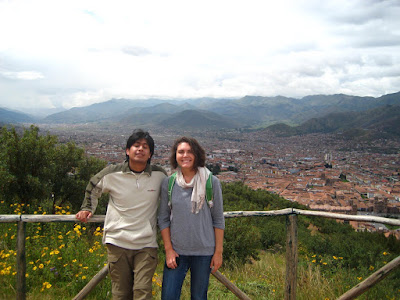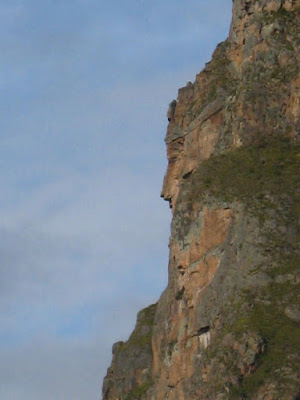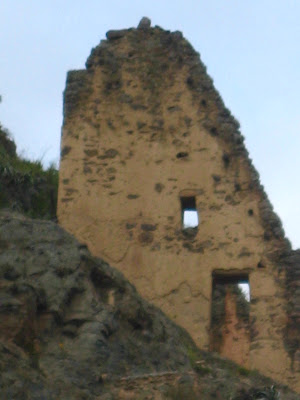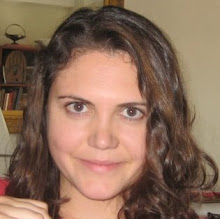First top: Saqsaywaman, where the Inca king had his throne.
Walking up from Cusco to the ruins:

Me with my students in a doorway:

Landscapes of Saqsaywaman:


An engraving in the mountainside by soldiers - "Viva El Peru!":

My students overlooking the city:

Plaza de las Armas from afar:

Me with my students, Lucy and Jenny:

With the teacher I help, Angel:

Angel demonstrating how Incas moved giant stones:

The Incas were amazing at carving and fitting together these multi-ton rocks. Good example in the pic below:

The ruins of Saqsaywaman were created in the shape of a lightening bolt:


At Qenko, stop number two. The bridge leading to the ruins, a labyrinth carved into rocks:

Inside the rocks:

The llama was the symbol of fertility to the Incas, so they carved it everywhere. Below is an example, with the neck, head and ear of a llama created in space by the carved rocks:

In the labyrinth:

On the way to our next stop, we saw these giant dolls in the trees. A little creepy:

These are "Incan" trees. They only grow above 3000m altitude:

At Tambo Machay, stop number three. The fountain of youth. No one knows where the water comes from, and it never slows down or speeds up. The Incan queen used to bathe here. Here, me an Lucy are getting a little of the magic water.

These are the three styles of architecture you'll see in the ruins around Cusco. At the bottom, the "cellular" style. In the middle, the "Incan" style, characterized by how they were able to cut stones with curves so they fit perfectly together, resembling pillows. At the top is the classical style.

Pretty landscape shot:

At Tambo Machay:

Taking a rest at Tambo Machay to eat some fruit.

Some sort of fruit resembling a pear...can't remember the name, but it's pretty ugly!

Okay, at the next stop, Puka Pukara, I didnt' get any pics at because it was raining really hard. The final stop was the Temple de la Luna. It's another cave inside a giant rock. At the top is a hole and at the Winter Solstace the light shines straight down onto a sacrificial table. Shot inside the temple:

Me inside the Temple, with my pancho still on...it was raining so hard!!



























